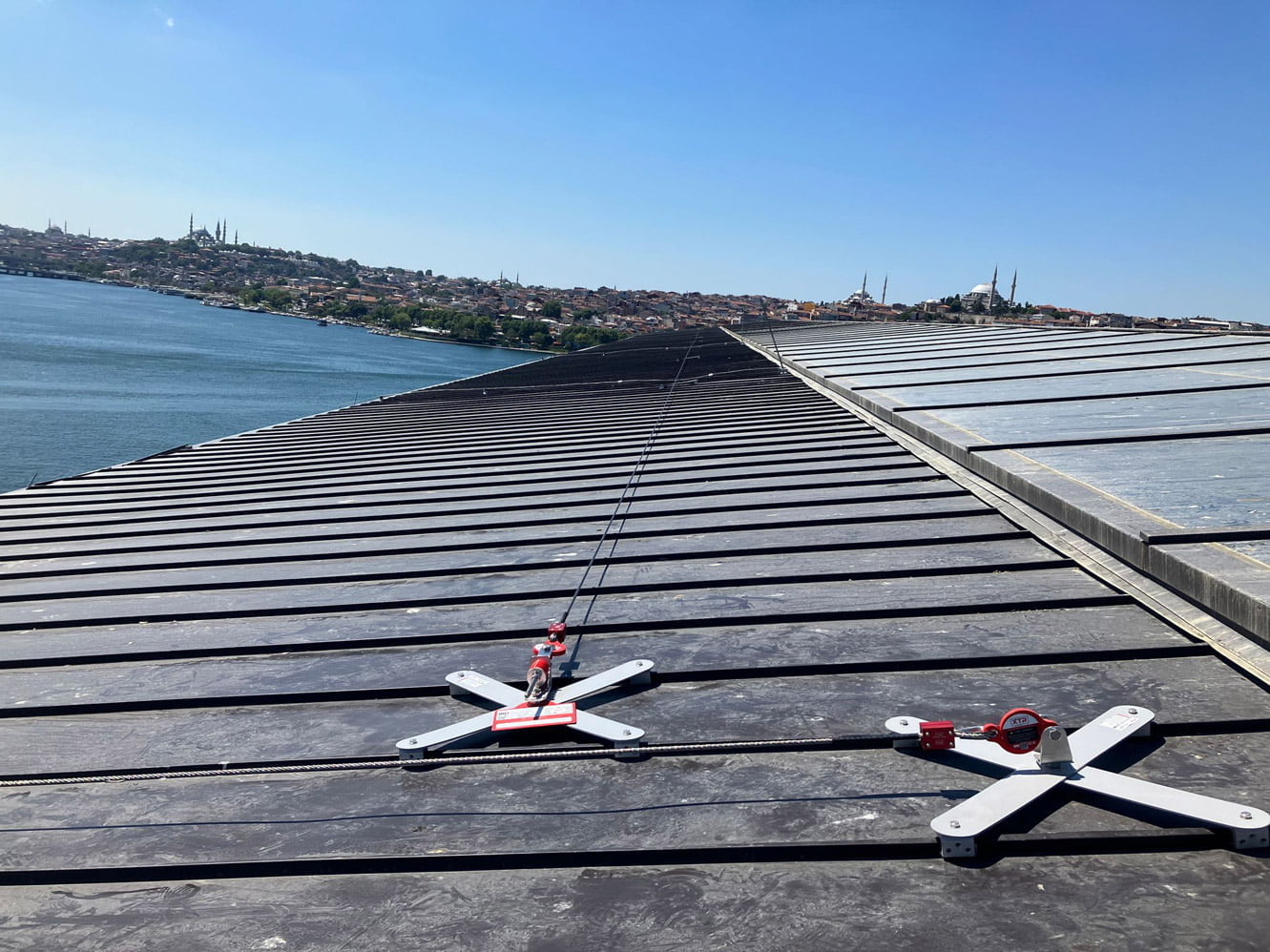Work on sloping roofs carries a risk of falling. Lifeline is the primarily preferred fall arrest system on roofs.
- In standing seam roofs, horizontal lifelines can be established using the roof surface.
- Installation can be done without drilling any holes on the roof by using a clamp suitable for the clamp type.
- Systems installed with standing seam roof anchors do not damage the roof.
- The layout planning of the lifelines to be installed on the roof should be carried out by professionals who are familiar with the principles of working at height.
Application
25 Year Warranty
All XTR Safety products are covered by a 25-year manufacturer’s warranty
Stainless Steel & Aluminum
XTR Safety products are manufactured with stainless steel and aluminum materials with high corrosion resistance
Insurance
All our operations are protected by insurance with a coverage of 1.000.000 USD against installation errors
Standing seam roofs are roof coverings that are fixed by interlocking sheets without using screws. Flat standing seam, trapezoidal standing seam and locking type standing seam roofs are available. Different brands have different types of clamp application methods that work on the principle of clamping the hair.
Lifeline installation on standing seam type roofs is done directly using the standing seam roof surface. In this installation method, the clamps are compressed using specially designed clamps and the anchor is fixed to the structure. Thanks to the specially designed anchors and clamps of the XTR Safety lifelines, the point load is spread over a large surface of the roof. Lifelines installed on standing seam roofs are the primary choice for fall protection with their ease of installation and superior strength.
According to EN 795:2012 standards, horizontal lifelines are defined in the range 0-15°. On roofs with slopes over 15°, the lifeline should not be installed in the same direction as the slope. Nowhere between the beginning and end of the lifeline should the slope be above 15°.
In a scenario where direct roof sheet is used as the installation method, XTR Safety anchors do not require extra insulation work. In the scenario where the roof is cut off and the under-roof carriers are used, special insulation work is required.
















